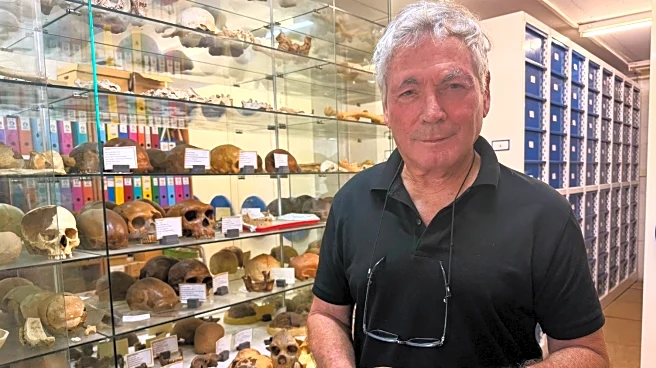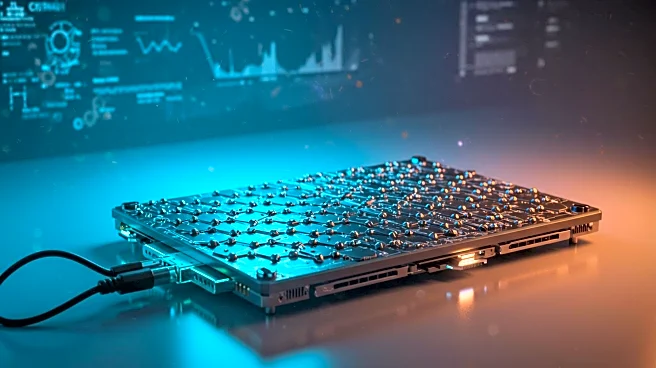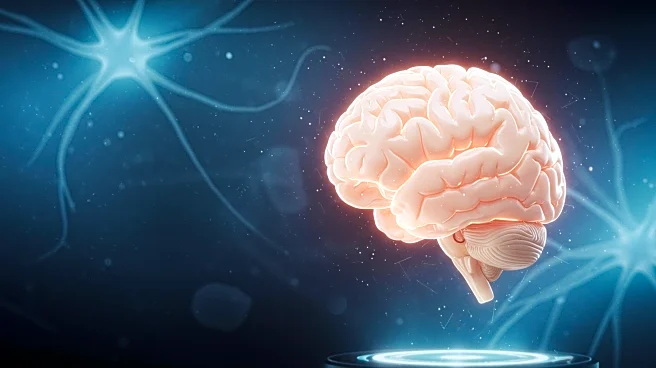What's Happening?
Researchers at the University of California San Diego, in collaboration with NeurANO Bioscience and Nanotools Bioscience, have developed a novel method using graphene to stimulate and mature human brain organoids. This method, known as Graphene-Mediated Optical Stimulation (GraMOS), accelerates brain organoid development without genetic modification. The technology allows brain organoids to control robotic devices in real-time, offering new possibilities for disease research and brain-machine interfaces. The study highlights the potential of graphene in enhancing neural activity and development, particularly for modeling age-related conditions like Alzheimer's disease.
Why It's Important?
The development of GraMOS represents a significant advancement in neuroscience and neuroengineering. By accelerating the maturation of brain organoids, researchers can study neurological diseases more effectively and develop new therapeutic strategies. This technology could revolutionize the way scientists approach brain research, offering a non-invasive and biocompatible method to influence neural activity. The integration of living neural tissue with robotics also opens up new possibilities for advanced prosthetics and adaptive interfaces, potentially transforming the field of artificial intelligence and machine learning.
What's Next?
The successful application of GraMOS in brain organoid research could lead to further exploration of its use in other types of lab-grown tissues. Researchers may also investigate the potential of linking living neural networks to machines, enhancing the adaptability and learning capabilities of AI systems. This technology could pave the way for new forms of computation and innovative solutions in tissue engineering and regenerative medicine.












